Before the Game of Thrones map sequence became a digital model, it was first a sketch. Take a look at the process with these design illustrations of Rustam Hasanov. With them he explores the mechanisms that move the cities, inspired by Leonardo Da Vinci’s invented machines.
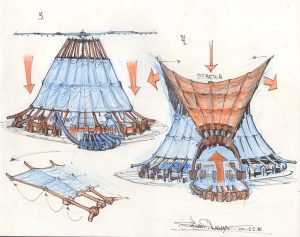
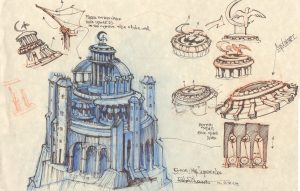
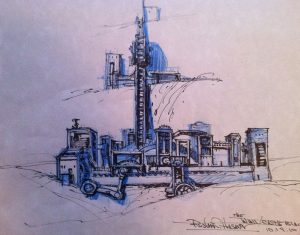
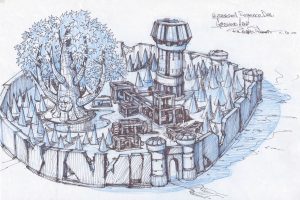
Source: http://www.artofthetitle.com/title/game-of-thrones/
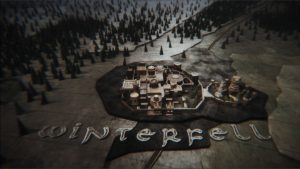
Games of Thrones opening credits
First aired: April 17, 2011
Location: Westeros (fictional) | created in Santa Monica, CA (digital)
Media: CG model built in Maya (made to look like natural materials)
Title designer: Angus Wall, with a team of 25-30 people
Original size/scale: intended for widescreen home TV’s
Projection system: map projected on the interior of a sphere
Target audience: fans of the Game of Thrones books
Readers of the Game of Thrones novels flip to the map at the front of the book if they need to orient themselves in the fantasy world of Westeros – and in the same way, viewers of the Game of Thrones television series watch the opening credits at the beginning of each episode. This opening sequence translates the printed map into an animated landscape that sets the tone for the show. Now with an animated form, the map is in a constant state of flux and change, just as characters and cities likewise change within the narrative. Very few title sequences are the same from episode to episode, just as nothing remains static for very long in Westeros. The gears and intricate mechanisms working beneath the surface of the map also represent the hidden and interlocking schemes of the characters vying for the throne – using the form of the map to help tell the show’s story in a new way.
http://www.artofthetitle.com/title/game-of-thrones/
LARC582D_URBAN REPRESENTATIONS: MAPPING_THE INVISIBLE




 Follow
Follow